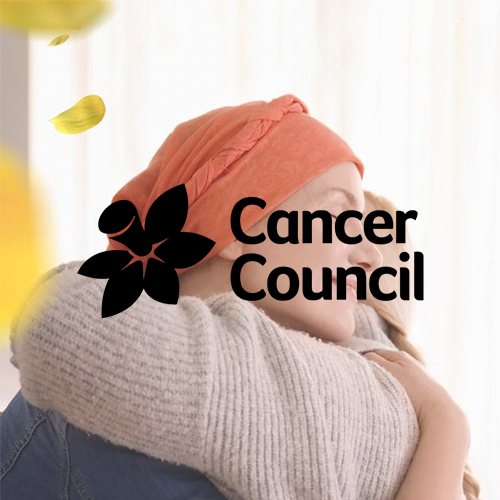E-commerce SEO with a Difference


OD has a methodical approach to SEO that is proven to deliver tangible results. We start projects in a waterfall approach tackling keyword/audience research, competitor landscape analysis, technical audit of the website, on-site and content optimisation.
By addressing these elements within the SEO ecosystem, we are setting a solid foundation for a website. This ensures that the website is free of any critical technical issues and sending search engines the relevancy signals they require to rank the website. It is also during these phases where “quick wins” would be identified to start improving SEO performance.
Once the foundational aspects of SEO are completed and implemented – building links and authority to the website becomes more impactful. The focus of off-site optimisation campaigns would be far more aligned to the overall objective of ongoing SEO activity.
In order for us to measure the impact and success of SEO, we provide ongoing reporting covering key performance metrics such as traffic, conversions and revenue alongside metrics obtained via analytics.
We adopt an “optimisation” mindset where we are constantly looking for opportunities to improve performance. SEO is an ongoing process of prioritising task based on effort and impact.

Arguably the most important phase of SEO. By conducting thorough keyword research we will strive to understand the search behaviour of the client’s target audience. During this process, popular keywords are identified and the intent of each search query determined This will allow us to develop an ongoing strategy and prioritise optimisation tasks.
Using various data sources, we would gather more keyword ideas and their associated search volume data. In addition to this, we would also scrape data for competing websites to understand their keyword focus and usage, covering short, mid, and long-tail keywords.
We go through the keyword selection and shortlist process in consultation with the client to determine the intent and relevance of keywords to the business and shortlist keyword ideas into a manageable list that we can then use to optimise the website and prioritise SEO tasks.
Data is utilised across all pillars of our SEO offering, and the set of keywords to benchmark the website and provide ongoing reporting. Our approach is to understand what keyword sets are relevant to your offering and match this to what people are searching for, and provide meaningful insight and reporting on results and campaign performance.

We dive deep under the hood of your website to deliver an actionable checklist to improve your search presence. We analyse your website’s keyword targeting, content depth, inbound links, and technical performance to advise you how to best position your website in search. Technical architecture ensures crawlers can index and rank pages without issue. Our 200+ item technical checklist covers :
Identified issues are documented with in-depth solutions to ensure:
Your server access logs are the purest form of data we love to get our hands-on. Through in-depth log file analysis, we will analyse how search engine crawlers are interacting with your website. Logfile analysis will allow us to optimise the website for crawl efficiencies.

The Information Architecture [IA] defines how pages are nested and has significant SEO impact. Using research data, we map keywords to pages so as to identify content gaps and categories that needs to be renamed.

Keyword mapping ensures every page has a distinct keyword target, reducing the risk of keyword cannibalisation.
Once the keyword mapping is finalised, we then optimise the IA by reorganising pages to ensure that they are thematically and semantically siloed.
The IA optimisation process will achieve the maximum SEO impact, but also ensure the user journey and navigational path is intuitive and frictionless for content discovery.
The best practice is to ensure that key pages are 2 to 3 clicks away from the homepage.

Once your target keywords have been identified, we will apply these findings with our thorough on-site optimisation process. All the important on-site elements and content on the website will be optimised, most importantly for users and readability, but also for search engines. This includes the optimisation of other digital assets such as images, videos and PDFs.
Every page should have 2 to 3 relevant target keywords, applied to:
The synergy of keyword usage informs of the topic and intent of each page, sending valuable relevancy signals. Best practice ensures indexing limits are adhered to.
Key elements act as elevator pitches in the search results pages (SERPs). Ensuring a strong call to actions, and unique selling proposition, entice higher SERP click-through-rate.
Paid Marketing data and ad creative performance reports assist in ensuring the consistency of brand message.

Content is King for SEO. Without text content, search engines have trouble determining the search relevancy of pages.
Industry research confirms a direct correlation of content to rankings; crawlable and visible text content depth increases the chances of SERP rankings.
Lack of content is commonplace in eCommerce. Ensuring sufficient Hygiene content is a minimum requirement to remain competitive. Particularly on key transactional, category and product pages

Off-site optimisation otherwise known as link building is an extremely important aspect of SEO. Link-building drives and builds authority to the website, every unique link (referring domain) to the website acts as a vote of popularity. Based on the many ranking factors research studies that have been done, the number of links to a website directly correlates with rankings.
We approach link building in a white hat manner and do not employ manipulative tactics and strategies to obtain links. Depending on the situation and vertical of a client, we use and craft unique strategies to suit, looking for the “quick wins” first before exploring more advanced tactics.
Where available and possible, we like to leverage any linkable assets that a client has for link acquisition. Through our experience and the changes in the landscape, “link begging” and blindly outreaching for links is non-sustainable and not a good brand representation. Where content marketing and traditional link building tactics crossover is where the most valuable and high quality links would be acquired.

Traditional SEO + Google Local
Businesses with a large store footprint have the ability to dominate the organic search results by ranking well in both traditional organic listings as well as Google Local map pack
Ensuring each store ranks well within the map pack can be a big traffic driver to the website. Based on industry research, map packs account for 24% of traffic on desktop and 18% of traffic on mobile
Ranking well in Google Local requires different optimisation tactics as it has different ranking factors compared to traditional organic listings
Below are some important ranking factors in Google Local:
In many cases the store locator page on the bsuinesses website needs improvement, as a focus on locations based signals for Google is overlooked in many cases, and ensuring that LocalBusiness structured data is available is critical in ranking well within the map pack
The store locator setup should have dedicated landing pages targeting keyword+state, keyword+city and keyword+suburb

Revamping your website can be an exciting but daunting time. What if your audience and customers don’t follow you on the ride? What if you miss a few crucial steps and search engines can no longer find you?
Whether your website is undergoing a redesign or a complete structural change, it’s the perfect time to enlist the help of professionals. We work to ensure search engines respond positively to your new website whilst avoiding any nasty drop-offs.
SEO Migrations vary in complexity across:
Each type has a unique set of challenges and nuances. It is not as simple as creating 301 redirects. Every website and brand has a different set of variables impacting SEO.
Our approach is to ensure we identify all change variables and potential performance risk. In addition to a robust redirect plan, we ensure the new asset has no indexability or crawlability issues.
A robust strategy ensures SEO value is retained and transferred with minimal traffic and ranking losses.







From e-commerce businesses large and small, we have applied our revenue-driven methodology and blueprint to achieve tangible and measurable results for clients.












